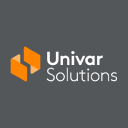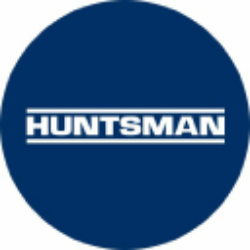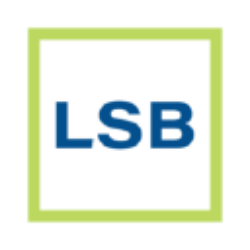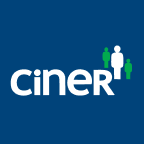UNVR

Univar Solutions Inc.
UNVR
(1.5)36,14 USD
5.16% ROA
22.78% ROE
23.52x PER
5.700.903.902,00 USD
89.83% DER
0% Yield
4.75% NPM
Univar Solutions Inc. Stock Analysis
Univar Solutions Inc. Fundamental Analysis
Fundamental analysis in stock investing is like studying the foundation of a house before buying it. It involves looking at a company's financial health, like its earnings, assets, and debts, to determine if it's a good investment based on its fundamental strength and potential for growth.
| # | Analysis | Rating |
|---|---|---|
| 1 |
ROE
ROE in an average range (14.35%) suggests satisfactory profitability and decent utilization of shareholders' equity. |
|
| 2 |
ROA
The stock's ROA (7.93%) indicates that it's doing well in making money from the things it owns. This makes it a good option to invest and make consistent profits. |
|
| 3 |
PBV
The stock's PBV ratio (2.08x) reflects a fair valuation, making it an attractive option for investors seeking balanced opportunities. |
|
| 4 |
DER
The stock has a reasonable amount of debt compared to its ownership (90%), suggesting a balanced financial position and a moderate level of risk. |
|
| 5 |
Assets Growth
With a track record of continuous revenue growth in the last three years, this company offers a promising investment opportunity |
|
| 6 |
Buffet Intrinsic Value
The company's stock presents an enticing opportunity as it appears undervalued (2.668) by Warren Buffett's formula, indicating that its intrinsic value exceeds the market price. |
|
| 7 |
Revenue Growth
Regrettably, this company's revenue has shown no signs of growth over the past three years, suggesting limited potential for returns and making it a less appealing choice. |
|
| 8 |
Net Profit Growth
This company's net profit has remained flat over the past five years, suggesting a lack of growth and making it a less attractive investment opportunity. |
|
| 9 |
Graham Number
The Graham number of this company suggests that its stock price may be overvalued, indicating a less favorable investment opportunity. |
|
| 10 |
Dividend Growth
The company's dividend growth has been flat for the past three years, raising concerns for potential investors seeking reliable returns. |
|
| 11 |
Dividend
Investors should note the absence of dividends from the company in the last three years, indicating potential financial challenges. |
Univar Solutions Inc. Technical Analysis
Technical analysis in stock investing is like reading the patterns on a weather map to predict future weather conditions. It involves studying past stock price movements and trading volumes to make predictions about where a stock's price might go next, without necessarily looking at the company's financial health.
| # | Analysis | Recommendation |
|---|---|---|
| 1 | Awesome Oscillator | Sell |
| 2 | MACD | Buy |
| 3 | RSI | Buy |
| 4 | Stoch RSI | Sell |
Univar Solutions Inc. Price Chart
Financial Statements
Financial statements are like report cards for companies. They show how much money a company makes (income statement), what it owns and owes (balance sheet), and where it spends its money (cash flow statement), helping stock investors understand if a company is healthy and worth investing in.
Income Statements
An income statement for a company is like a scoreboard for its profits and losses. It shows how much money the company made (revenue) and how much it spent to make that money (expenses), helping stock investors see if a company is making a profit or not.
Revenue in stock investing is the total amount of money a company earns from its sales, and it's a key factor that investors consider to assess a company's financial performance and growth potential.
| Year | Revenue | Growth |
|---|---|---|
| 2008 | 9.428.200.000 | |
| 2009 | 7.194.500.000 | -31.05% |
| 2011 | 9.718.500.000 | 25.97% |
| 2012 | 9.747.100.000 | 0.29% |
| 2013 | 10.324.600.000 | 5.59% |
| 2014 | 10.373.900.000 | 0.48% |
| 2015 | 8.981.800.000 | -15.5% |
| 2016 | 8.073.700.000 | -11.25% |
| 2017 | 8.253.700.000 | 2.18% |
| 2018 | 8.632.500.000 | 4.39% |
| 2019 | 9.286.900.000 | 7.05% |
| 2020 | 8.265.000.000 | -12.36% |
| 2021 | 9.535.500.000 | 13.32% |
| 2022 | 11.475.300.000 | 16.9% |
| 2023 | 10.296.400.000 | -11.45% |
Research and Development Expenses are the costs a company incurs to create and improve its products or services, which can be important for investors to evaluate a company's innovation and potential for future growth.
| Year | Research and Development Expenses | Growth |
|---|---|---|
| 2008 | 0 | |
| 2009 | 0 | 0% |
| 2011 | 0 | 0% |
| 2012 | 0 | 0% |
| 2013 | 0 | 0% |
| 2014 | 0 | 0% |
| 2015 | 0 | 0% |
| 2016 | 0 | 0% |
| 2017 | 0 | 0% |
| 2018 | 0 | 0% |
| 2019 | 0 | 0% |
| 2020 | 0 | 0% |
| 2021 | 0 | 0% |
| 2022 | 0 | 0% |
| 2023 | 0 | 0% |
General and Administrative Expenses are the costs a company incurs to run its day-to-day operations, such as office rent, salaries, and utilities, which investors consider to understand a company's overall efficiency and management effectiveness.
| Year | General and Administrative Expenses | Growth |
|---|---|---|
| 2008 | 0 | |
| 2009 | 0 | 0% |
| 2011 | 963.500.000 | 100% |
| 2012 | 1.008.200.000 | 4.43% |
| 2013 | 893.300.000 | -12.86% |
| 2014 | 1.053.400.000 | 15.2% |
| 2015 | 899.000.000 | -17.17% |
| 2016 | 955.500.000 | 5.91% |
| 2017 | 923.600.000 | -3.45% |
| 2018 | 952.100.000 | 2.99% |
| 2019 | 1.093.900.000 | 12.96% |
| 2020 | 1.036.800.000 | -5.51% |
| 2021 | 1.217.200.000 | 14.82% |
| 2022 | 1.282.800.000 | 5.11% |
| 2023 | 1.180.000.000 | -8.71% |
EBITDA stands for Earnings Before Interest, Taxes, Depreciation, and Amortization. It is a measure that helps stock investors analyze a company's profitability by looking at its earnings without considering certain expenses. This helps to get a clearer picture of the company's financial performance and its ability to generate cash flow.
| Year | EBITDA | Growth |
|---|---|---|
| 2008 | 477.000.000 | |
| 2009 | 414.000.000 | -15.22% |
| 2011 | 570.000.000 | 27.37% |
| 2012 | 473.200.000 | -20.46% |
| 2013 | 637.100.000 | 25.73% |
| 2014 | 498.800.000 | -27.73% |
| 2015 | 518.600.000 | 3.82% |
| 2016 | 461.800.000 | -12.3% |
| 2017 | 536.900.000 | 13.99% |
| 2018 | 588.200.000 | 8.72% |
| 2019 | 627.300.000 | 6.23% |
| 2020 | 571.000.000 | -9.86% |
| 2021 | 870.200.000 | 34.38% |
| 2022 | 1.044.100.000 | 16.66% |
| 2023 | 862.000.000 | -21.13% |
Gross profit is the money a company makes from selling its products or services after subtracting the cost of producing or providing them, and it is an important measure for investors to understand a company's profitability.
| Year | Gross Profit | Growth |
|---|---|---|
| 2008 | 1.389.000.000 | |
| 2009 | 1.208.600.000 | -14.93% |
| 2011 | 1.835.500.000 | 34.15% |
| 2012 | 1.822.500.000 | -0.71% |
| 2013 | 1.875.900.000 | 2.85% |
| 2014 | 1.930.700.000 | 2.84% |
| 2015 | 1.799.100.000 | -7.31% |
| 2016 | 1.727.100.000 | -4.17% |
| 2017 | 1.805.500.000 | 4.34% |
| 2018 | 1.900.100.000 | 4.98% |
| 2019 | 2.140.800.000 | 11.24% |
| 2020 | 2.002.200.000 | -6.92% |
| 2021 | 2.393.200.000 | 16.34% |
| 2022 | 2.771.200.000 | 13.64% |
| 2023 | 2.499.200.000 | -10.88% |
Net income in stock investing is like the money a company actually gets to keep as profit after paying all its bills, and it's an important measure to understand how well a company is doing financially.
| Year | Net Profit | Growth |
|---|---|---|
| 2008 | -8.000.000 | |
| 2009 | -42.700.000 | 81.26% |
| 2011 | -176.200.000 | 75.77% |
| 2012 | -197.400.000 | 10.74% |
| 2013 | -82.300.000 | -139.85% |
| 2014 | -20.100.000 | -309.45% |
| 2015 | 16.500.000 | 221.82% |
| 2016 | -68.400.000 | 124.12% |
| 2017 | 119.800.000 | 157.1% |
| 2018 | 172.300.000 | 30.47% |
| 2019 | -105.600.000 | 263.16% |
| 2020 | 52.900.000 | 299.62% |
| 2021 | 460.600.000 | 88.51% |
| 2022 | 545.300.000 | 15.53% |
| 2023 | 351.200.000 | -55.27% |
EPS, or earnings per share, is a measure that shows how much profit a company has earned for each outstanding share of its stock, and it is important for stock investors as it helps understand the profitability of a company and compare it with other companies in the market.
| Year | Earning per Share (EPS) | Growth |
|---|---|---|
| 2008 | 0 | |
| 2009 | 0 | 0% |
| 2011 | -1 | 100% |
| 2012 | -2 | 50% |
| 2013 | -1 | 0% |
| 2014 | 0 | 0% |
| 2015 | 0 | 0% |
| 2016 | -1 | 0% |
| 2017 | 1 | 0% |
| 2018 | 1 | 100% |
| 2019 | -1 | 0% |
| 2020 | 0 | 0% |
| 2021 | 3 | 100% |
| 2022 | 3 | 33.33% |
| 2023 | 2 | -50% |
Cashflow Statements
Cashflow statements show the movement of money in and out of a company, helping stock investors understand how much money a company makes and spends. By examining cashflow statements, investors can assess if a company is generating enough cash to pay its bills, invest in growth, and provide returns to stockholders.
Free cash flow is the leftover cash that a company generates after covering its operating expenses and capital expenditures, which is important for stock investors as it shows how much money a company has available to invest in growth, pay dividends, or reduce debt.
| Year | Free Cashflow | Growth |
|---|---|---|
| 2008 | -68.100.000 | |
| 2009 | 151.500.000 | 144.95% |
| 2010 | -64.900.000 | 333.44% |
| 2011 | 159.500.000 | 140.69% |
| 2012 | -154.600.000 | 203.17% |
| 2013 | 148.000.000 | 204.46% |
| 2014 | 12.400.000 | -1093.55% |
| 2015 | 211.000.000 | 94.12% |
| 2016 | 359.500.000 | 41.31% |
| 2017 | 196.200.000 | -83.23% |
| 2018 | 195.300.000 | -0.46% |
| 2019 | 241.400.000 | 19.1% |
| 2020 | 115.600.000 | -108.82% |
| 2021 | 179.400.000 | 35.56% |
| 2022 | 392.600.000 | 54.3% |
| 2023 | 241.200.000 | -62.77% |
Operating cash flow represents the cash generated or consumed by a company's day-to-day operations, excluding external investing or financing activities, and is crucial for stock investors as it shows how much cash a company is generating from its core business operations.
| Year | Operating Cashflow | Growth |
|---|---|---|
| 2008 | 9.400.000 | |
| 2009 | 217.400.000 | 95.68% |
| 2010 | 27.100.000 | -702.21% |
| 2011 | 262.400.000 | 89.67% |
| 2012 | 15.500.000 | -1592.9% |
| 2013 | 289.300.000 | 94.64% |
| 2014 | 126.300.000 | -129.06% |
| 2015 | 356.000.000 | 64.52% |
| 2016 | 449.600.000 | 20.82% |
| 2017 | 278.900.000 | -61.2% |
| 2018 | 289.900.000 | 3.79% |
| 2019 | 363.900.000 | 20.34% |
| 2020 | 226.900.000 | -60.38% |
| 2021 | 290.300.000 | 21.84% |
| 2022 | 546.400.000 | 46.87% |
| 2023 | 274.200.000 | -99.27% |
Capex, short for capital expenditures, refers to the money a company spends on acquiring or upgrading tangible assets like buildings, equipment, or technology, which is important for stock investors as it indicates how much a company is investing in its infrastructure to support future growth and profitability.
| Year | Capital Expenditure | Growth |
|---|---|---|
| 2008 | 77.500.000 | |
| 2009 | 65.900.000 | -17.6% |
| 2010 | 92.000.000 | 28.37% |
| 2011 | 102.900.000 | 10.59% |
| 2012 | 170.100.000 | 39.51% |
| 2013 | 141.300.000 | -20.38% |
| 2014 | 113.900.000 | -24.06% |
| 2015 | 145.000.000 | 21.45% |
| 2016 | 90.100.000 | -60.93% |
| 2017 | 82.700.000 | -8.95% |
| 2018 | 94.600.000 | 12.58% |
| 2019 | 122.500.000 | 22.78% |
| 2020 | 111.300.000 | -10.06% |
| 2021 | 110.900.000 | -0.36% |
| 2022 | 153.800.000 | 27.89% |
| 2023 | 33.000.000 | -366.06% |
Balance Sheet
Balance sheets provide a snapshot of a company's financial health and its assets (such as cash, inventory, and property) and liabilities (like debts and obligations) at a specific point in time. For stock investors, balance sheets help assess the company's overall worth and evaluate its ability to meet financial obligations and support future growth.
Equity refers to the ownership interest or stake that shareholders have in a company, representing their claim on its assets and earnings after all debts and liabilities are paid.
| Year | Equity | Growth |
|---|---|---|
| 2008 | 220.600.000 | |
| 2009 | 433.000.000 | 49.05% |
| 2010 | 875.900.000 | 50.57% |
| 2011 | 660.300.000 | -32.65% |
| 2012 | 526.400.000 | -25.44% |
| 2013 | 381.300.000 | -38.05% |
| 2014 | 248.100.000 | -53.69% |
| 2015 | 816.700.000 | 69.62% |
| 2016 | 809.900.000 | -0.84% |
| 2017 | 1.090.100.000 | 25.7% |
| 2018 | 1.191.700.000 | 8.53% |
| 2019 | 1.732.800.000 | 31.23% |
| 2020 | 1.792.300.000 | 3.32% |
| 2021 | 2.292.500.000 | 21.82% |
| 2022 | 2.494.200.000 | 8.09% |
| 2023 | 2.736.000.000 | 8.84% |
Assets represent the valuable resources that a company owns, such as cash, inventory, property, and equipment, and understanding a company's assets helps investors assess its value and potential for generating future profits.
| Year | Assets | Growth |
|---|---|---|
| 2008 | 5.657.600.000 | |
| 2009 | 5.191.700.000 | -8.97% |
| 2010 | 0 | 0% |
| 2011 | 0 | 0% |
| 2012 | 6.530.500.000 | 100% |
| 2013 | 6.217.000.000 | -5.04% |
| 2014 | 6.076.600.000 | -2.31% |
| 2015 | 5.612.400.000 | -8.27% |
| 2016 | 5.389.900.000 | -4.13% |
| 2017 | 5.732.700.000 | 5.98% |
| 2018 | 5.272.400.000 | -8.73% |
| 2019 | 6.494.800.000 | 18.82% |
| 2020 | 6.355.000.000 | -2.2% |
| 2021 | 6.777.800.000 | 6.24% |
| 2022 | 7.145.700.000 | 5.15% |
| 2023 | 7.252.100.000 | 1.47% |
Liabilities refer to the financial obligations or debts that a company owes to creditors or external parties, and understanding a company's liabilities is important for investors as it helps assess the company's financial risk and ability to meet its obligations.
| Year | Liabilities | Growth |
|---|---|---|
| 2008 | 5.437.000.000 | |
| 2009 | 4.758.700.000 | -14.25% |
| 2010 | 4.607.400.000 | -3.28% |
| 2011 | 3.632.900.000 | -26.82% |
| 2012 | 6.004.100.000 | 39.49% |
| 2013 | 5.835.700.000 | -2.89% |
| 2014 | 5.828.500.000 | -0.12% |
| 2015 | 4.795.700.000 | -21.54% |
| 2016 | 4.580.000.000 | -4.71% |
| 2017 | 4.642.600.000 | 1.35% |
| 2018 | 4.080.700.000 | -13.77% |
| 2019 | 4.762.000.000 | 14.31% |
| 2020 | 4.562.700.000 | -4.37% |
| 2021 | 4.485.300.000 | -1.73% |
| 2022 | 4.651.500.000 | 3.57% |
| 2023 | 4.516.100.000 | -3% |
Univar Solutions Inc. Financial Ratio (TTM)
Valuation Metrics
- Revenue per Share
- 49.76
- Net Income per Share
- 1.54
- Price to Earning Ratio
- 23.52x
- Price To Sales Ratio
- 0.73x
- POCF Ratio
- 8.82
- PFCF Ratio
- 10.87
- Price to Book Ratio
- 2.08
- EV to Sales
- 0.98
- EV Over EBITDA
- 12.66
- EV to Operating CashFlow
- 11.95
- EV to FreeCashFlow
- 14.73
- Earnings Yield
- 0.04
- FreeCashFlow Yield
- 0.09
- Market Cap
- 5,70 Bil.
- Enterprise Value
- 7,73 Bil.
- Graham Number
- 24.48
- Graham NetNet
- -15.61
Income Statement Metrics
- Net Income per Share
- 1.54
- Income Quality
- 2.67
- ROE
- 0.09
- Return On Assets
- 0.08
- Return On Capital Employed
- 0.15
- Net Income per EBT
- 0.72
- EBT Per Ebit
- 0.91
- Ebit per Revenue
- 0.07
- Effective Tax Rate
- 0.28
Margins
- Sales, General, & Administrative to Revenue
- 0.12
- Research & Developement to Revenue
- 0
- Stock Based Compensation to Revenue
- 0
- Gross Profit Margin
- 0.24
- Operating Profit Margin
- 0.07
- Pretax Profit Margin
- 0.07
- Net Profit Margin
- 0.05
Dividends
- Dividend Yield
- 0
- Dividend Yield %
- 0
- Payout Ratio
- 0
- Dividend Per Share
- 0
Operating Metrics
- Operating Cashflow per Share
- 4.1
- Free CashFlow per Share
- 3.33
- Capex to Operating CashFlow
- -0.19
- Capex to Revenue
- -0.02
- Capex to Depreciation
- -0.9
- Return on Invested Capital
- 0.06
- Return on Tangible Assets
- 0.05
- Days Sales Outstanding
- 69.8
- Days Payables Outstanding
- 55.74
- Days of Inventory on Hand
- 60.64
- Receivables Turnover
- 5.23
- Payables Turnover
- 6.55
- Inventory Turnover
- 6.02
- Capex per Share
- -0.77
Balance Sheet
- Cash per Share
- 2,72
- Book Value per Share
- 17,34
- Tangible Book Value per Share
- 1.14
- Shareholders Equity per Share
- 17.34
- Interest Debt per Share
- 16.21
- Debt to Equity
- 0.9
- Debt to Assets
- 0.34
- Net Debt to EBITDA
- 3.32
- Current Ratio
- 2.18
- Tangible Asset Value
- 0,18 Bil.
- Net Current Asset Value
- -1,35 Bil.
- Invested Capital
- 0.9
- Working Capital
- 1,71 Bil.
- Intangibles to Total Assets
- 0.35
- Average Receivables
- 1,54 Bil.
- Average Payables
- 0,94 Bil.
- Average Inventory
- 1044650000
- Debt to Market Cap
- 0.43
Dividends
Dividends in stock investing are like rewards that companies give to their shareholders. They are a portion of the company's profits distributed to investors, typically in the form of cash payments, as a way for them to share in the company's success.
| Year | Dividends | Growth |
|---|
Univar Solutions Inc. Profile
About Univar Solutions Inc.
Univar Solutions Inc. distributes commodity and specialty chemical products, and provides related services worldwide. It offers epoxy resins, polyurethanes, titanium dioxide, fumed silica, esters, plasticizers, silicones, and specialty amines; ingredients for cleaners, detergents, and disinfectant products; and base stocks, performance-enhancing additives for lubricants and metalworking fluids. The company also distributes specialty and basic chemicals, and ingredients used in skin and hair care products; and commodity and specialty products for meat processing, baked goods, dairy, grain mill products, processed foods, carbonated soft drinks, fruit drinks, and alcoholic beverage markets, as well as provides excipients, solvents, reactants, active pharmaceutical ingredients, and intermediates to pharmaceutical ingredient producers. In addition, it offers chemical products for use at various stages of production, from sap stain prevention to pulp and paper manufacturing; and chemistries and products used to sanitize, balance, and supplement municipal and industrial water. Further, the company provides chemicals to midstream pipeline and downstream refinery operators, as well as chemicals and services to upstream oil and gas sector for offshore production, oil extraction, and waste management activities. Additionally, it offers transportation and warehousing services, chemicals and hazardous materials handling, waste management services, inventory management, and blending, mixing, and repackaging services. Univar Solutions Inc. distributes its products through warehouse and direct-to-consumer delivery channels. The company was formerly known as Univar Inc. and changed its name to Univar Solutions Inc. in September 2019. Univar Solutions Inc. was founded in 1924 and is headquartered in Downers Grove, Illinois.
- CEO
- Mr. David C. Jukes
- Employee
- 9.746
- Address
-
3075 Highland Parkway
Downers Grove, 60515
Univar Solutions Inc. Executives & BODs
| # | Name | Age |
|---|---|---|
| 1 |
Mr. Patrick M. Jerding Senior Vice President & Chief Information Officer |
70 |
| 2 |
Mr. David C. Jukes Pres, Chief Executive Officer & Director |
70 |
| 3 |
Ms. Jennifer A. McIntyre Senior Vice President and Chief People & Culture Officer |
70 |
| 4 |
Ms. Heather Anne Kos CPA Vice President of Investor Relations |
70 |
| 5 |
Ms. Alexandra Colin Gen. Counsel |
70 |
| 6 |
Mr. George J. Fuller Senior Vice President of Local Chemical Distribution - USA |
70 |
| 7 |
Mr. Nicholas Powell Senior Vice President, Pres of Specialty Chemicals, Ingredients and Reg. Pres of EMEA & Asia Pacific |
70 |
| 8 |
Mr. Matthew Ottaway Senior Vice President of Beauty Care & Nutrition |
70 |
| 9 |
Mr. Jorge C. Buckup Senior Vice President & Pres of Latin America |
70 |
| 10 |
Ms. Noelle J. Perkins Senior Vice President, Sec. & Chief Risk Officer |
70 |
| 11 |
Mr. Nicholas William Alexos CPA Executive Vice President & Chief Financial Officer |
70 |
| 12 |
Ms. Heather Anne Kos C.P.A. Vice President of Investor Relations |
70 |
| 13 |
Ms. Alexandra S. Colin Senior Vice President, Gen. Counsel & Sec. |
70 |









